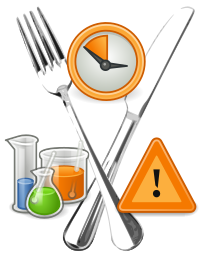
Occurrence and genetic diversity of rotavirus A in faeces of diarrheic calves submitted to a veterinary laboratory in Spain.
Sign Up to like & getrecommendations! Published in 2020 at "Preventive veterinary medicine"
DOI: 10.1016/j.prevetmed.2020.105196
Abstract: A total of 237 faecal specimens from diarrheic calves younger than two months were collected and submitted for diagnosis of enteropathogens over a two-year period (2017-2018) to a veterinary laboratory. Samples originated from 193 dairy… read more here.
Keywords: veterinary laboratory; genetic diversity; rotavirus; rva ... See more keywords

Risk factors for bovine rotavirus infection and genotyping of bovine rotavirus in diarrheic calves in Bangladesh
Sign Up to like & getrecommendations! Published in 2022 at "PLoS ONE"
DOI: 10.1371/journal.pone.0264577
Abstract: Bovine rotavirus (BRV) is considered the leading cause of calf diarrhea worldwide, including Bangladesh. In this study we aimed to identify risk factors for BRV infection and determine the G and P genotypes of BRV… read more here.
Keywords: infection; bovine rotavirus; brv; risk factors ... See more keywords

Effect of dehydration and acidemia on the potassium content of muscle tissue and erythrocytes in calves with neonatal diarrhea.
Sign Up to like & getrecommendations! Published in 2018 at "Journal of dairy science"
DOI: 10.3168/jds.2018-14790
Abstract: Disturbances of extracellular potassium (K) homeostasis in calves with severe neonatal diarrhea have been studied extensively. Although total body depletion of this predominantly intracellular electrolyte is generally thought to occur in diarrheic calves, the mechanisms… read more here.
Keywords: muscle; tissue; diarrheic calves; muscle tissue ... See more keywords

Determination of an RT-qPCR viral load cutoff point for the etiologic diagnosis of rotavirus A diarrhea in neonate dairy calves
Sign Up to like & getrecommendations! Published in 2022 at "Frontiers in Veterinary Science"
DOI: 10.3389/fvets.2022.952197
Abstract: Rotavirus A (RVA) is amongst the most widespread causes of neonatal calf diarrhea. Because subclinical infections are common, the diagnosis of RVA-induced diarrhea cannot rely solely on molecular viral detection. However, RT-qPCR allows for quantification… read more here.
Keywords: viral load; dairy calves; load; diarrheic calves ... See more keywords

Occurrence of Escherichia coli Pathotypes in Diarrheic Calves in a Low-Income Setting
Sign Up to like & getrecommendations! Published in 2022 at "Pathogens"
DOI: 10.3390/pathogens12010042
Abstract: Different E. coli pathotypes are common zoonotic agents. Some of these pathotypes cause recurrent and widespread calf diarrhea and contribute to significant economic losses in the livestock sector worldwide in addition to putting humans at… read more here.
Keywords: low income; income setting; coli pathotypes; occurrence ... See more keywords

Identification of Five Serotypes of Enteropathogenic Escherichia coli from Diarrheic Calves and Healthy Cattle in Belgium and Comparative Genomics with Shigatoxigenic E. coli
Sign Up to like & getrecommendations! Published in 2022 at "Veterinary Sciences"
DOI: 10.3390/vetsci9090492
Abstract: Simple Summary Enteropathogenic Escherichia coli (EPEC) from cattle receive little attention, although some belong to the most notorious O serotypes of attaching/effacing Shigatoxigenic Escherichia coli (AE-STEC) responsible for the uremic and hemolytic syndrome in humans,… read more here.
Keywords: escherichia coli; bovine epec; healthy cattle; enteropathogenic escherichia ... See more keywords